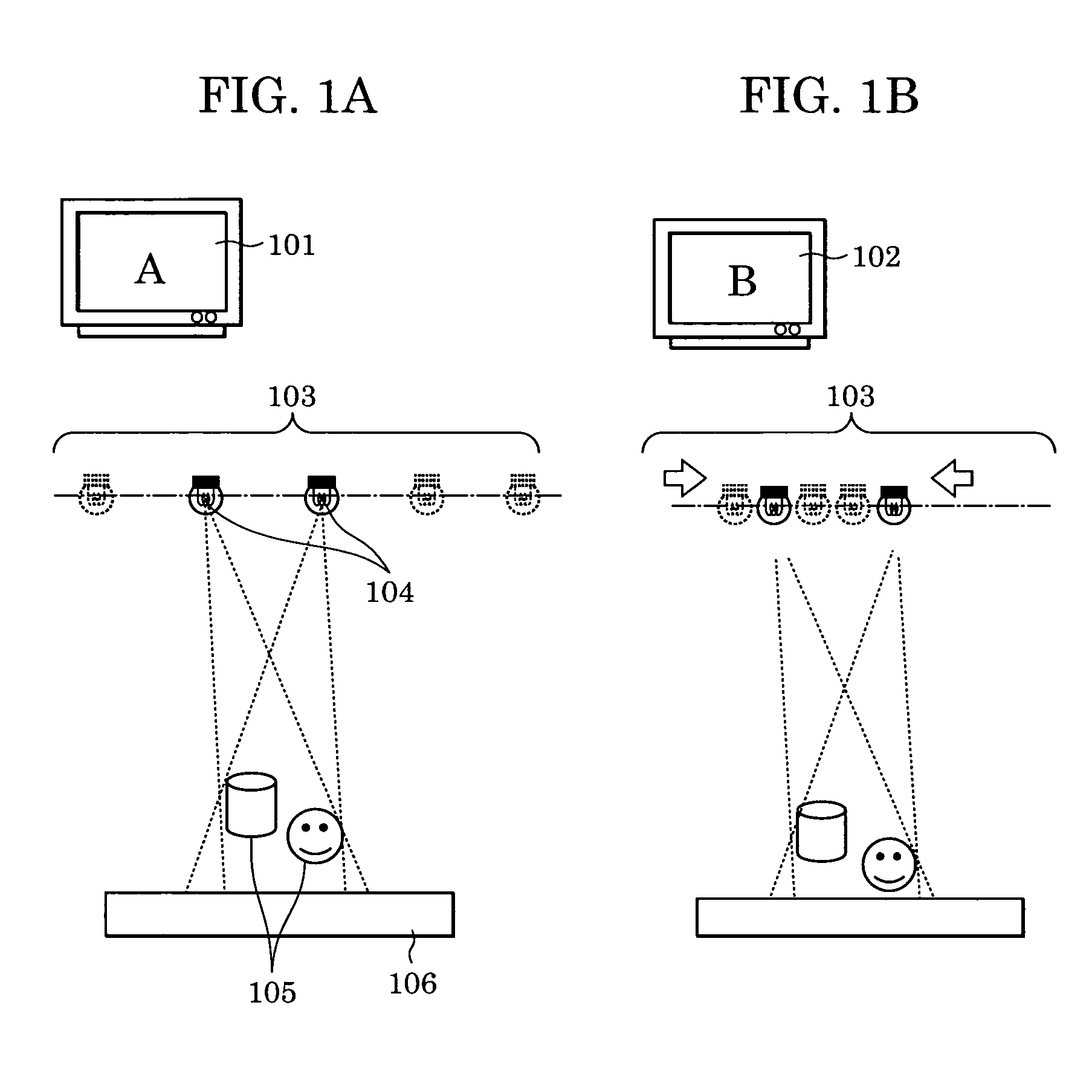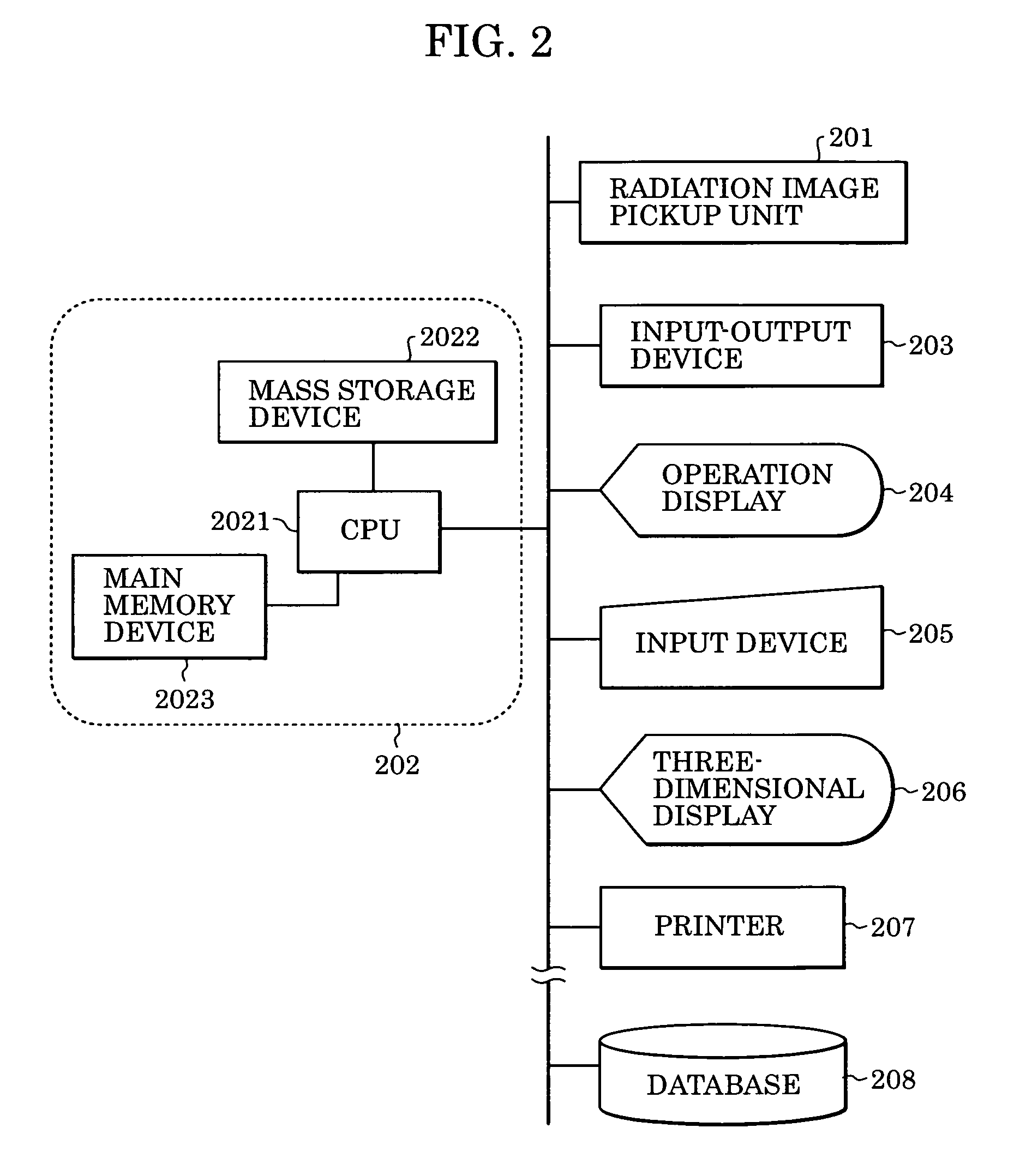System of generating stereoscopic image and control method thereof
a stereoscopic image and control method technology, applied in the field of generating stereoscopic images and control methods thereof, can solve the problems of difficulty in directly performing stereoscopic observation of images, difficulty in determining the distribution of diseased parts on a three-dimensional space, and the resolution of reconstructed images becoming lower than that of picked-up images
- Summary
- Abstract
- Description
- Claims
- Application Information
AI Technical Summary
Benefits of technology
Problems solved by technology
Method used
Image
Examples
first embodiment
[0031]FIG. 2 is a block diagram showing the structure of a system of generating a stereoscopic image (hereinafter referred to as a stereoscopic-image generating system), according to a first embodiment of the present invention. Referring to FIG. 2, the stereoscopic-image generating system includes a radiation image pickup unit 201 converting a rear-projected image picked up by irradiation with radioactive rays (for example, X-rays) into an electrical signal. As shown in FIG. 3, the radiation image pickup unit 201 includes an image pickup device 301 having a radiation receiving element (e.g., a photoelectric transducer which converts the radioactive rays into a electrical signal) and a radiation source 303 capable of moving with respect to the image pickup device 301. The radiation source 303 moves toward positions 304, 305, 306, . . . . Here, neither the radiation image pickup unit 201 nor the image pickup device 301 need to pick-up an object image. That is, there is no need for the...
second embodiment
[0125]A stereoscopic-image generating system according to a second embodiment of the present invention is described next. The stereoscopic-image generating system according to the second embodiment has the same structure as the stereoscopic-image generating system according to the first embodiment. The same reference numerals are used in the second embodiment to identify the same components in the first embodiment. A detailed description of such components is omitted herein.
[0126]According to the second embodiment, the storage-and-reproduction mode is described. In the storage-and-reproduction mode, a predetermined number of rear-projected images (the group of parallax images) are picked up and stored while varying the positions of the radiation source. Next, necessary parallax images are selected from the stored data based on the three-dimensional display parameters relating to the characteristics, including virtual positions of the radiation source (hereinafter referred to as virt...
PUM
 Login to View More
Login to View More Abstract
Description
Claims
Application Information
 Login to View More
Login to View More - R&D
- Intellectual Property
- Life Sciences
- Materials
- Tech Scout
- Unparalleled Data Quality
- Higher Quality Content
- 60% Fewer Hallucinations
Browse by: Latest US Patents, China's latest patents, Technical Efficacy Thesaurus, Application Domain, Technology Topic, Popular Technical Reports.
© 2025 PatSnap. All rights reserved.Legal|Privacy policy|Modern Slavery Act Transparency Statement|Sitemap|About US| Contact US: help@patsnap.com



